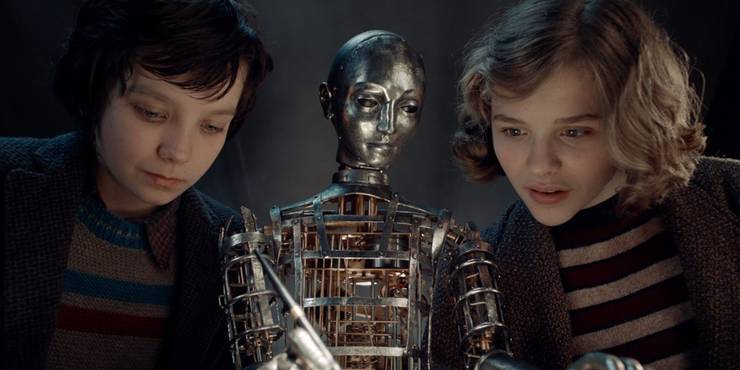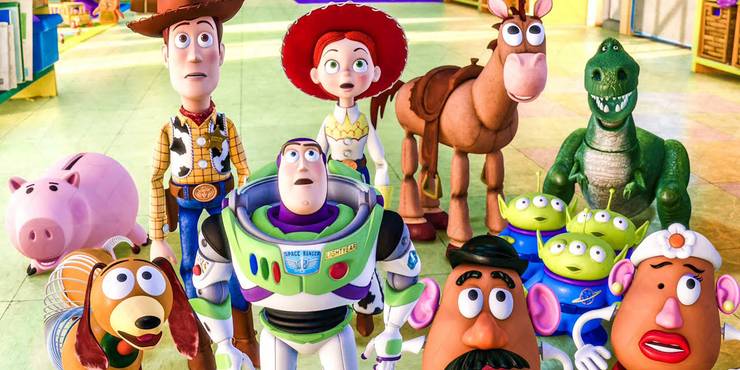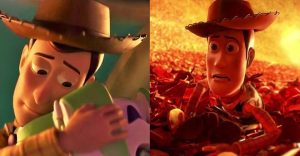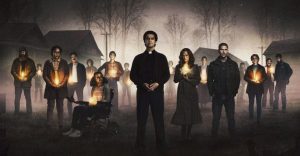10 Best 3D Movies From The 2010s

After the success of the epic science fiction 3D film Avatar in 2009, movie after movie came out in the 2010s trying to emulate its masterful use of the technology. While several of these ended up being some of the worst 3D films ever made, there are a few exceptions that showed 3D could be used to move, excite, and inspire.
These 3D movies combine compelling stories with thrilling action and special effects, resulting in totally immersive experiences that wowed audiences in the cinema. They made the long lines and bulky goggles worth it, as viewers would leave with a remarkable experience that they likely still remember today.
10 Gravity (2013)

The science-fiction thriller Gravity has a unique setting. It takes place in the vast emptiness of space, while at the same time, is often limited by the size of the spacecraft that its protagonists have to navigate back down to earth. The claustrophobic yet intimate scenes coupled with excellent performances by Sandra Bullock and George Clooney are only made better by its 3D elements.
Director Alfonso Cuarón worked with Stereo Supervisor Chris Parks to perfect the 3D elements of the film during post-conversion. Their efforts resulted in a dizzying trip through space that drove audiences to the edge of their seats.
9 Tron: Legacy (2010)

2010’s Tron: Legacy, has the same stylish elements as the original 1982 sci-fi film, Tron, but was made with more advanced techniques that make it so visually stunning. The franchise revolutionized the sci-fi genre and redefined what it meant to explore human-technology relationships on the big screen.
While there are many ways Tron: Legacy did not surpass its predecessor, one aspect it does better than the original is its visuals. The virtual reality of ‘The Grid’ was given new life thanks to a combination of native 3D shots and special effects. The futuristic vehicles, neon lights, and action sequences were unsurprisingly even more exciting in 3D.
8 Need For Speed (2014)

With a plot centered around a street racer who is determined to avenge his friend’s death by outmaneuvering his rival, Need for Speed was not exactly popular for its story. What fans loved the movie for were its freeway chases and wild stunts, which made up for its questionable dialogue and thin plot.
Director Scott Waugh’s insistence on practical stunts meant that the whole film evoked a feeling of real danger that was thrilling for audiences. This realness was only enhanced by an expert 3D post-conversion process that made the desert and city routes, action sequences, and stunts more gripping.
7 Hugo (2011)

When the 3D children’s film, Hugo, was released, it was a pleasant surprise for critics and viewers, in large part because it was directed by Martin Scorcese. Scorcese had just helmed the Shutter Island the year before and was known for his grittier works like Goodfellas and Raging Bull.
Scorcese’s masterful use of 3D to tell the moving story of a boy exploring the wonders of filmmaking is obvious in both the movie’s extreme close-up and sweeping aerial shots. The director himself commented on the medium’s unique ability to evoke emotions, stating in a BBC interview: “I found 3D to be really interesting because the actors were more upfront emotionally.”
6 Life Of Pi (2012)

Based on Yann Martel’s novel of the same name, Life of Pi takes viewers on a fantastical adventure out at sea, where the protagonist is stranded with a Bengal tiger. It is difficult to find other fantasy-adventure movies like Life of Pi because of its unique sequences that make audiences feel like they’re immersed in a work of art.
Combining live-action, CGI, and 3D, Director Ang Lee breathed life into the novel and created a poignant movie that captivated its viewers. The 3D aspect of the film added depth to every moment – from the stillness of the sea to the chaotic storms, audiences could feel that they were right beside Pi, drifting aimlessly in the ocean.
5 The Walk (2015)

While The Walk is not the first portrayal of Philippe Petit’s 1974 walk across the towers of the World Trade Center, as the film is based on the 2008 documentary, Man On Wire, it surpasses the documentary with its cinematography, which was emphasized by its use of 3D.
Director Robert Zemeckis expertly uses the technology in a dizzying moment in the movie, where the camera seems to fall straight to the ground from 110 stories high. This reminder of just how tall the buildings are is only punctuated by what comes next, which is a riveting and painfully long sequence of Petit walking across the tightrope.
4 How To Train Your Dragon (2010)

Dreamworks’ How To Train Your Dragon tells the story of a young Viking who ends up becoming friends with an adorable enemy named Toothless. It’s a film that has action, a heartwarming story, and lots of dragons, so it isn’t surprising that it was a massive hit.
By looking at the concept art for How To Train Your Dragon, fans can get a good idea of just how much work went into creating this magical world. What this film did right was it maximized the use of 3D in this world, both during its fast-paced action sequences and its slower, more heartfelt moments.
3 Dredd (2012)

Set in an apocalyptic future, Dredd revolves around the story of one of the Judges in the ‘Cursed Earth.’ Judge Dredd serves as judge, jury, and executioner in this world. His mission in the film is to take down Ma-Ma, who is poisoning Mega-City One with a new dangerous drug called Slo-Mo.
Shot in 3D using high-speed cameras, director Pete Travis expertly navigates this violent setting with brutal fight sequences that seem to jump out of the screen. The best use of 3D in the movie is during the “Slo-Mo” scenes, as the drug literally causes everything to move in slow motion. The distortion of time and disorienting effects and angles during these scenes makes audiences feel as if they were experiencing the drug’s effects, too.
2 Dawn Of The Planet Of The Apes (2014)

Often considered one of the best among the Planet of the Apes franchise, Dawn of the Planet of the Apes continues Caesar’s story and his struggle for control among his kind. The film also shows the other side, exploring how the last of humanity is managing to survive in this dystopian world.
Directed by Matt Reeves, the later installments of the franchise are known for their realistic CGI. What some people may not know, however, is that the film uses native-3D shots heavily, too. These are especially seen in the forest sequences, where the use of 3D cameras adds an incredible depth to an already stunning backdrop.
1 Toy Story 3 (2010)

Pixar brought audiences back into the colorful world of Toy Story when they released Woody and Buzz’s final adventure. Nostalgia was far from its only selling point, as Toy Story 3 told an exciting story of how the beloved gang of toys had to evade Lotso the bear. Of course, fans of the franchise are more likely to remember the unexpected tear-jerking moments towards the end of the film.
The addition of 3D into the film made the action even better. Viewers could experience being chucked in a box, running away from the claws of an incinerator, being picked up by a claw crane, and more. The 3D aspect also made the more quiet heartfelt moments feel heavier, punctuating the emotions of the characters that fans grew up and have fallen in love with.
About The Author

















